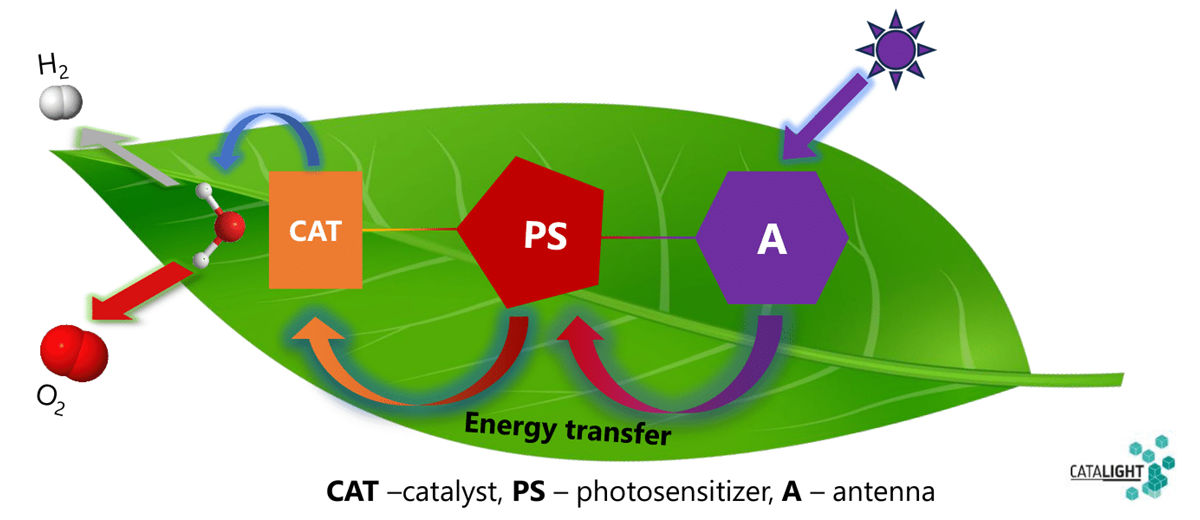Leticia Gonzáles at the Institute of Theoretical Chemistry leads the ” CataLight” project.
Description: Elementary hydrogen is widely seen as a potential clean source of chemical energy. Unfortunately, its production by water electrolysis is not economically and ecologically favorable, due to a high energy barrier of the water-splitting reaction that entails a very high energy price to be paid. Nevertheless, it is possible to surmount this barrier by utilizing the energy of light, just like it happens in chloroplasts during the photosynthesis. This is referred to as photocatalysis and is in practice achieved by adding an artificial molecular complex catalyst-photosensitizer-antenna to the system. Antenna then harvests the light energy, transfers it to the photosensitizer, which in turn activates the catalyst, and the catalysis of targeted reaction can take place. Leticia Gonzáles’ group, as a part of Collaborative Research Center “CataLight”, aims to provide a fundamental atomistic-level understanding of the energy-transfer processes occurring in the photocatalytic cycles. The researchers accomplish this by employing a versatile palette of theoretical methods and models, some of which are based on the first-principles theories, while others are semiempirical. By doing so, they intend to pave a way for a targeted design of novel catalytic materials, which would then facilitate more efficient design of economically and ecologically favorable photocatalytic setups for chemical reactions of immediate importance for humanity.
Collaborators: Sven Rau, Andrea Pannwitz (University of Ulm), Felix Schacher (University of Jena)
Duration: 2 × 4 years (three funding periods: 2018-2022-2026)
